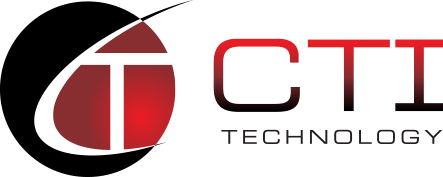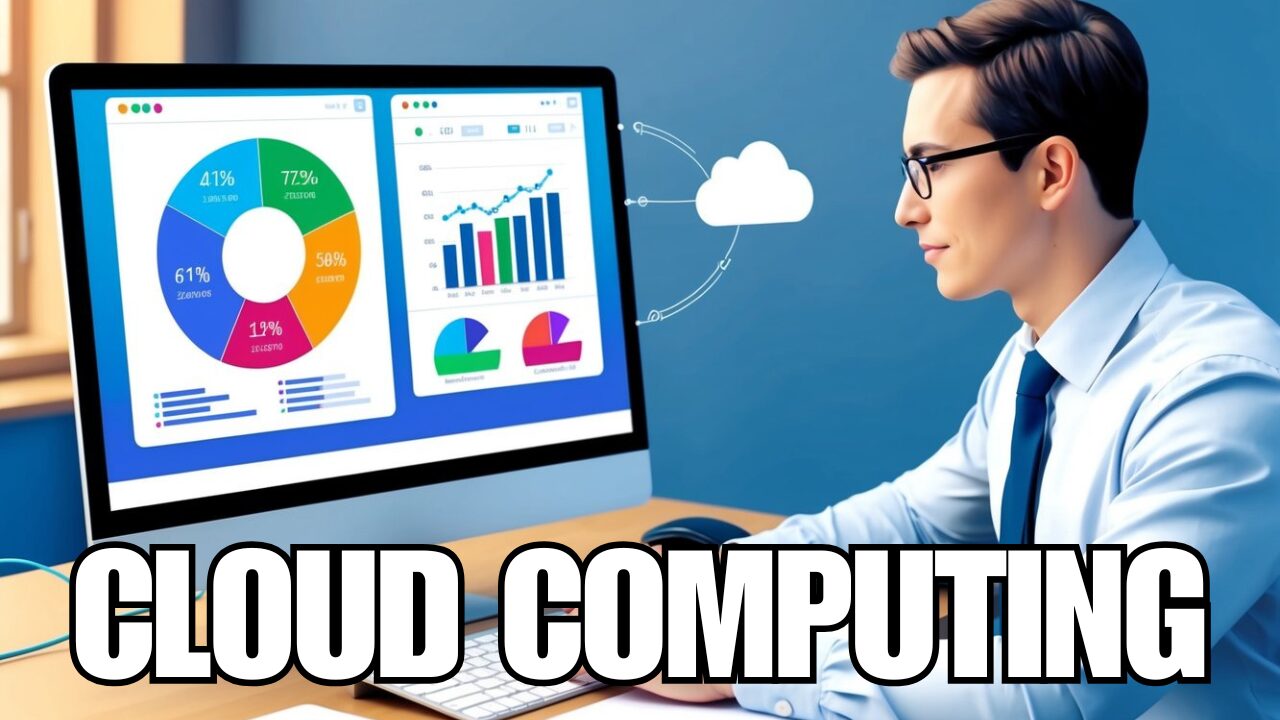How Information Systems Significantly Helps Reduce Your Organization’s Carbon Footprint: Practical Strategies and Benefits
Reducing your organization’s carbon footprint is more important than ever, and information systems are crucial in achieving this goal. By leveraging technology, you can effectively reduce energy consumption, optimize resource use, and track your environmental impact. Green IT solutions can significantly decrease carbon emissions while maintaining operational efficiency.
Information systems provide a comprehensive approach to sustainability by integrating renewable energy sources, monitoring energy usage, and promoting eco-friendly practices among employees. For instance, cloud-powered technologies facilitate efficient resource utilization, essential for industries with substantial carbon footprints like manufacturing and transportation.
Adopting these strategies not only helps the environment but can also result in cost savings and improved public image for your organization. Stay ahead of the curve by embracing the innovative potential of information systems to drive your sustainability efforts.
Key Takeaways
- Green IT solutions significantly reduce carbon emissions.
- Information systems enhance resource efficiency and promote eco-friendly practices.
- Sustainable tech adoption benefits both the environment and the organization’s reputation.
The Importance of Green Information Systems
Green Information Systems (IS) are pivotal in reducing your organization’s environmental impact. They incorporate sustainable practices into technology, ensuring efficient operations and lower carbon emissions.
Defining Green Information Systems
Green Information Systems refer to technologies and processes designed to minimize environmental harm. This involves everything from the design and manufacturing of computers to their disposal. For example, opting for energy-efficient hardware and software requiring less power can significantly reduce energy consumption.
Adopting e-waste recycling programs is another aspect of Green IS, addressing the growing problem of electronic waste. Unfortunately, many organizations recycle less than 10% of their IT hardware. By improving this, you can drastically reduce the environmental footprint of your technology operations.
Roles in Environmental Sustainability
Green IS supports environmental sustainability by integrating eco-friendly practices into your IT strategy. For one, optimized data management systems ensure that servers and data centers use the least energy possible while still meeting needs. This improves operational efficiency and energy savings.
Moreover, Green IS encourages virtual meetings and remote work, reducing the need for commuting and cutting related emissions. The digital transformation supported by these systems is essential in creating a sustainable organizational culture. With frameworks and policies in place, you can ensure all parts of your IT ecosystem contribute to a greener future.


Strategies for Reducing Carbon Footprint with Information Systems
Implementing energy-efficient hardware, utilizing cloud computing solutions, and optimizing data centers can significantly lower your organization’s carbon footprint. These strategies help reduce energy consumption and emissions without compromising technology services.
Energy-Efficient Hardware
Using energy-efficient hardware is a key strategy for reducing energy usage. Modern servers, processors, and storage devices consume less power and perform better. Devices certified by standards like ENERGY STAR consume significantly less electricity, making them an excellent choice for your organization.
Switching to energy-efficient hardware can reduce cooling requirements in data centers. This also lowers the overall energy consumption, leading to cost savings and a reduced carbon footprint. Consider implementing power management features that automatically turn off idle devices. These small adjustments can make a big difference.
Cloud Computing Solutions
Cloud computing provides a more sustainable approach to managing IT resources. By moving your operations to the cloud, you tap into the optimized environments of major providers. These providers often run energy-efficient data centers powered by renewable energy, substantially reducing emissions.
Cloud computing also allows for resource scaling, meaning you use only what you need. This flexibility prevents over-provisioning, which is common in traditional data centers. Additionally, using cloud-based services means you don’t need to maintain and power hardware, reducing direct and indirect emissions.
Data Center Optimization
Optimizing your data center is crucial for reducing carbon emissions. Efficient data centers use advanced technologies like liquid and free cooling, lowering energy usage. Implementing data center infrastructure management (DCIM) tools helps monitor and manage energy consumption.
Virtualization is another effective technique, allowing multiple virtual servers to run on a single physical server. This reduces the number of physical machines required and cuts down energy usage. Energy-efficient data centers often employ renewable energy sources and strive for certifications like LEED and Green Grid to measure their sustainability efforts.
Efficiently managing server workloads, using renewable energy, and employing advanced cooling solutions can significantly reduce your data center’s environmental impact. These strategies cut emissions and lead to lower operational costs, making them a win-win for your organization.
Software Solutions for Carbon Management
Organizations increasingly turn to digital tools to manage and reduce their carbon emissions. Key solutions include carbon accounting software and sustainable resource planning tools, which help them monitor, report on, and lower their carbon footprint.
Carbon Accounting Software
Carbon accounting software is essential for measuring and documenting your organization’s carbon emissions. This type of software gathers data on energy consumption, travel, and other activities that generate greenhouse gases.
Carbon accounting tools allow you to track your emissions in real time and gain insights into areas for improvement. Features often include customizable dashboards, automated data collection, and detailed reporting capabilities. These tools are important for ensuring compliance with environmental regulations and meeting sustainability targets.
Carbon accounting software also facilitates carbon credit trading by enabling you to quantify your reductions and excess emissions. This makes selling credits and purchase offsets easier, making your organization more carbon-neutral.
Sustainable Resource Planning
Sustainable resource planning software helps manage resources while minimizing environmental impact. These tools integrate with existing systems to streamline procurement, production, and logistics processes.
Using cloud-powered technologies can significantly reduce energy use and waste. Features of these tools often include energy consumption analytics, waste management modules, and supply chain optimization. By evaluating your resource use, you can identify inefficiencies and areas where sustainable practices can be applied.
These software solutions also often offer scenario planning and forecasting, allowing you to model potential process changes and see their environmental impact before implementing them. This ensures that your sustainability efforts are both effective and economically viable.
Integrating Renewable Energy Sources
By integrating renewable energy sources like solar and wind, your organization can take major steps toward reducing its carbon footprint. These systems promote sustainability and offer significant cost savings over time.
Solar-Powered Data Centers
Switching to solar energy for your data centers can lead to substantial environmental benefits. Solar panels harness sunlight and convert it into electricity, a clean and renewable energy source. This can reduce the use of fossil fuels and lower greenhouse gas emissions.
Solar-powered data centers often experience lower operating costs. Once the initial investment in solar panels is made, the ongoing costs are minimal compared to traditional energy sources. This can lead to long-term savings.
Furthermore, solar energy systems can be paired with battery storage technologies. This setup ensures that your data center has a reliable power supply, even during periods of low sunlight.
Wind Energy Contributions
Wind energy is another effective way to reduce your organization’s carbon footprint. Wind turbines convert kinetic energy from wind into electricity, providing a renewable and clean power source. Using wind energy can significantly decrease your reliance on fossil fuels.
Wind energy is particularly beneficial because it produces no direct emissions. Integrating wind power into your energy mix can help reduce air pollution and environmental damage.
Additionally, wind energy systems often have a small geographic footprint. They can be installed on land for other purposes, such as agriculture, making them a flexible option for incorporating renewable energy into your organization’s infrastructure.
By implementing both solar and wind energy solutions, you can create a balanced and sustainable energy strategy that cuts emissions and effectively manages costs.
Employee Behavior and Policy Change
Changing employee behavior and implementing green IT policies are essential strategies to reduce your organization’s carbon footprint. Specific practices can encourage employees to adopt eco-friendly habits, while policies can set the framework for sustainable IT operations.
Promoting Sustainable IT Practices
To encourage employees to adopt sustainable IT practices, start by raising awareness about the environmental impact of their technology use. Then, training on energy-saving techniques, such as turning off computers and monitors when not in use and using energy-efficient settings, should be provided.
Additionally, incentivize behaviors that reduce carbon emissions. Consider reward programs for employees who consistently follow sustainable practices, like reducing printing or participating in e-waste recycling programs.
Create a culture of sustainability by incorporating green practices into everyday workflows. This could include hosting challenges or events focused on sustainability, encouraging employees to share tips and success stories, and highlighting the tangible benefits of their actions.
Implementing Green IT Policies
Establishing green IT policies can significantly reduce energy consumption and e-waste. Set clear goals for energy use, such as a specific reduction percentage, and regularly monitor progress.
Adopt policies that prioritize the purchase and use of energy-efficient technology. This includes choosing devices with high energy star ratings and considering the total energy consumption over the equipment’s lifespan.
Implement e-waste management policies to responsibly recycle or repurpose old hardware. This can limit the amount of electronic waste your organization produces.
Lastly, formalize these policies in your company handbook and ensure that compliance is regularly reviewed and enforced. This will create a consistent approach across the organization and reinforce the importance of sustainability.
Monitoring and Reporting Systems
You can track real-time energy usage using advanced information systems and report on your operations’ environmental impact.
Real-Time Energy Monitoring
Real-time energy monitoring allows you to observe how much energy your organization uses at any moment. This helps identify periods of high consumption and areas where energy efficiency can be improved. You get detailed insights into energy usage patterns by employing smart meters and sensors.
Analyzing this data enables you to make informed decisions about energy conservation measures. For instance, you may upgrade to more energy-efficient equipment or adjust operational schedules to reduce peak energy use. Constant monitoring ensures you’re always aware of your energy footprint, enabling proactive management.
Environmental Impact Reporting
Environmental impact reporting involves collecting and analyzing data on greenhouse gas emissions and other environmental metrics. This data collection might include emissions from office buildings, company vehicles, and manufacturing processes. Tools like Carbon Footprint offer visibility into such data.
You can use this information to create detailed reports that comply with regulatory requirements and demonstrate your commitment to sustainability. Reporting these metrics improves transparency and can enhance your reputation with stakeholders.
Regular reporting lets you track your progress toward sustainability goals and pinpoint areas for further improvements. This systematic approach makes implementing effective strategies for reducing your organization’s carbon footprint easier.
Case Studies on Successful Implementations
Understanding how information systems have been successfully implemented can provide valuable insights. These cases highlight effective strategies and real-world outcomes from large corporations to small businesses.
Corporate Success Stories
McKinsey’s Green IT Revolution showcases CIOs’ role in reducing large corporations’ carbon footprints. By focusing on high-quality yet low-cost technology services, CIOs at leading companies have cut carbon emissions significantly.
A participatory approach to problem-solving can also be seen in an individual and organizational case study. Feedback-driven adjustments led to better adherence and more effective implementation of Green IT initiatives.
Small Business Innovations
Small businesses have also contributed to sustainable practices. One small firm used environmentally sustainable computing to monitor and reduce its carbon footprint across software, websites, and data centers. This multi-faceted approach enabled a notable decrease in emissions.
Another example is a case study that emphasizes the adoption of Green Information Systems to promote sustainability. This business significantly lowered greenhouse gas emissions by integrating green practices into its daily operations, aligning with global sustainability goals.
Challenges and Considerations
Implementing information systems to reduce an organization’s carbon footprint can be beneficial but involves several challenges. This includes managing costs, overcoming adoption barriers, and dealing with technological limitations.
Cost Implications
Adopting new information systems often requires a significant financial investment. Initial setup costs can be high due to software purchases, hardware upgrades, and employee training. Additionally, some systems may have ongoing maintenance fees and require further investments to stay current with technology updates.
Budget constraints can make it difficult for organizations to allocate enough resources to these investments. McKinsey’s article mentions green IT strategies as an example of these challenges.
Despite potential long-term savings through efficiency gains, the upfront costs can be quite daunting for some businesses.
Adoption Barriers
Even with a clear plan, getting everyone on board can be tough. Resistance to change is common. Employees may feel comfortable with existing systems and hesitant about learning new ones. Management buy-in is crucial, and without it, efforts can stall.
Training programs and ongoing support are necessary to help employees understand and use these systems effectively. Overcoming these barriers requires clear communication about the benefits and adequate support throughout the transition process.
Another barrier is integrating new systems with existing infrastructure. According to Spiceworks, ensuring compatibility and minimizing disruptions can be complex and resource-intensive.
Technological Limitations
Some limitations are inevitable with current technology. Data storage and processing demand high energy usage, which can offset the benefits of reducing a carbon footprint. Additionally, certain industries may have specific needs that have not yet been fully met by sustainable technologies.
Scalability can also be a concern. As your organization grows, the technology must be capable of handling increased demand without significantly increasing energy consumption.
Advances are being made, such as the use of cloud-based solutions to optimize energy use, as discussed in HBR’s article. Yet, staying updated on technological developments is essential to ensure the chosen information systems continue to effectively meet sustainability goals.
Future of Sustainable Information Systems
The future of sustainable information systems focuses on integrating new technologies to reduce energy consumption and carbon emissions. You will see advancements in green IT and a stronger commitment to eco-friendly practices.
Predictions for Green IT
Predicting the future of green IT, you can anticipate a surge in energy-efficient technologies. Companies might adopt specialized computing architectures designed to maximize utilization and minimize waste. These architectures can significantly lower the carbon footprint while maintaining high performance.
Expect that recycling IT hardware will become standard practice. Currently, most organizations recycle less than 10% of their IT hardware. As these practices improve, they can drastically reduce e-waste, which stood at 53.6 million tons in 2019.
New digital solutions will help lessen emissions in the top energy, materials, and mobility sectors. Implementing these technologies at a large scale could reduce global emissions by 20% by 2050. Prioritizing digital talent and data transparency is essential in achieving these goals.
Why Is CTI Technology The Best Choice For IT Services In The Chicagoland Region?






















